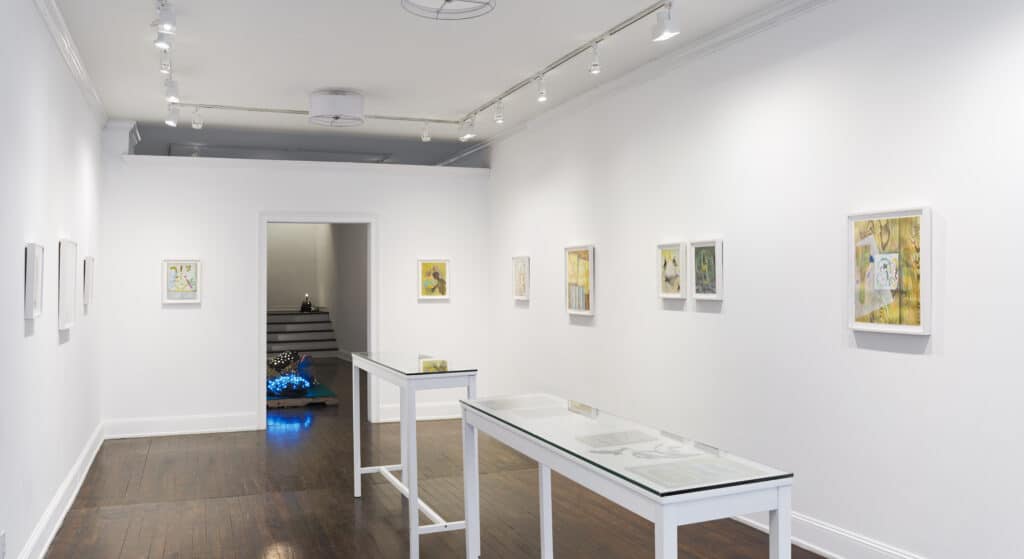Catherine Haggarty and Dan Gunn: Cerebrally humble and vice-versa

The direct and unpretentious title of Brooklyn artist Catherine Haggarty’s solo show “Just Drawing,” now up at Geary in Millerton, NY, conveys modest intent: to record on paper the inertial power of everyday life without much prior conceptual mediation. Just draw it. Cats by turns prowling a pyramid and emulating sphynxes on a starry night feature in a couple of drawings, which are meticulous without being fussy, and two others unobtrusively reference Haggarty’s art practice. Together these works and others essay a day in a life grounded by a comforting pet, reveries of icons, an enduring vocation, a familiar room, and scrappy clothing – nothing inherently grand, perhaps, but nothing remotely dismissible, either.
Don’t be fooled, though. There is considerable emotional depth to Haggarty’s version of mundaneness. Of special note on this score is the drawing Cath, depicting an idiosyncratically casual rendering of what is presumably her nickname on a gauzy white background spanning a window, that cat’s ears protruding from the top of the C. The idea could be idle doodling between drawings during a lapse in concentration at the studio, with the moment paradoxically emerging as a finely wrought piece of art – she derives remarkably vivid color and subtle perspective from crayon and acrylic airbrush – that archly acknowledges that however quaint and unassuming it’s still about her.
If Haggarty displays cerebral humility, Dan Gunn, in the next room, is humbly cerebral, his starting point being the noble concept of intergenerational obligation. In his solo “The Ungrateful Son,” eerily comical stoneware sculptures of giant toads, illuminated with quite dense arrays of implanted colored lightbulbs, are expressly inspired by the Grimm’s eponymous fairy tale about the young man who declines to share his food with his aged father, whereupon it turns into a predatory toad perpetually demanding nourishment. Gunn is no doubt aware of the topical political message that viewers might infer, especially in the summer heat, but his concerns are broader.
The Kansas-born Gunn’s device of marrying Midwestern folk art with techno-kitsch is for him an ambitious means of deconstructing “male subjectivity” – as specified in the press copy – in favor of an “anachronism that forgoes idealization.” If he means that outsized, lit-up amphibians of uncertain gender are too weirdly fictive to constitute recognizable symbols, he is no doubt right. And they occupy an uncanny space between scary and ridiculous, with little room for sentimentality. One is posed familiarly like a dog standing up, but it’s hard to feel any warmer towards it than a Chia-Pet. Haggarty’s cats, though a tad regal, are clearly loved. Here, at least, Gunn is the agitated artist, Haggarty the untroubled one. That both stake out those respective territories so decisively makes each a complementary success and the pairing of their exhibitions a deft frisson.